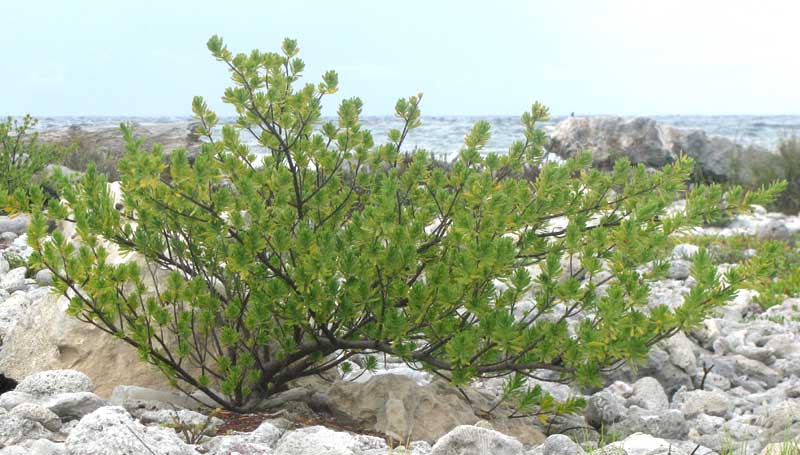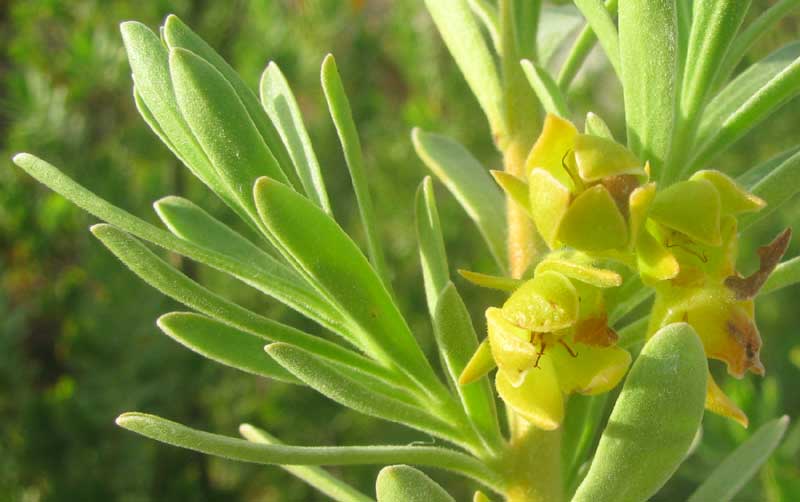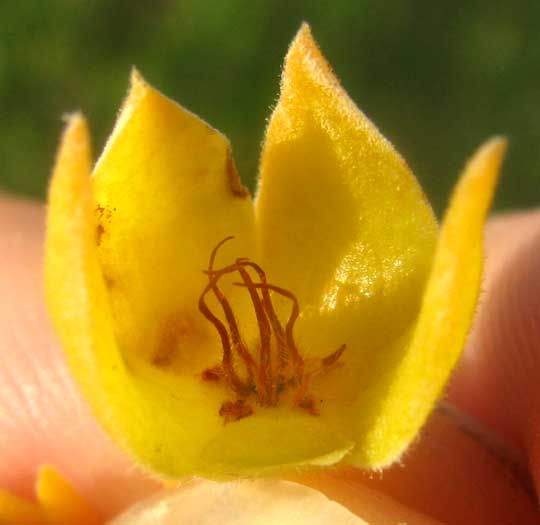Excerpts from Jim Conrad's
Naturalist Newsletter

from the June 19, 2011 Newsletter issued from Mayan Beach Garden Inn 20 kms north of Mahahual; Caribbean coastal beach and mangroves, ~N18.89°, ~W87.64°, Quintana Roo state, MÉXICO
BAY CEDAR
Above you see yet another local bush that's so pretty and robust that it deserves to be widely planted horticulturally. Down at the southern rocky point this waist-tall bush has been sculpted by the constant wind. In less exposed areas the plant takes on a dense, pleasing shape like a garden Forsythia. And like Forsythia it produces thumbnail-sized yellow flowers. You can see some blossoms and the bush's narrow, soft leaves below:

You can see a flower in which its five petals and ten stamens have shriveled and fallen away after pollination, leaving five yellowing, leathery sepals looking like petals, and five slender, brownish styles (ovary necks) rising in the flower's center, below:

Here we're talking about what's often called Bay Cedar in English, though it's hard to see what's cedary about it. It's SURIANA MARITIMA, a bush found in thickets, on sand dunes and rocky shores, often just beyond the high tide line, as in the picture. It occurs on tropical coasts throughout the world. In Florida it's listed as an endangered species. Local gardeners there recommend it for planting in buffer strips around parking lots, in highway median strips and at borders. It's regarded as a butterfly bush.
Bay Cedar's floral anatomy is unusual enough for it to belong to a family most Northern botanists have never heard of -- the Bay Cedar Family, or Surianaceae. The family is a small one with most species found in Australia. One unusual feature of flowers in the family is that their styles arise from the bases of the ovaries' separate "carpels," a carpel being a subdivision of an ovary.